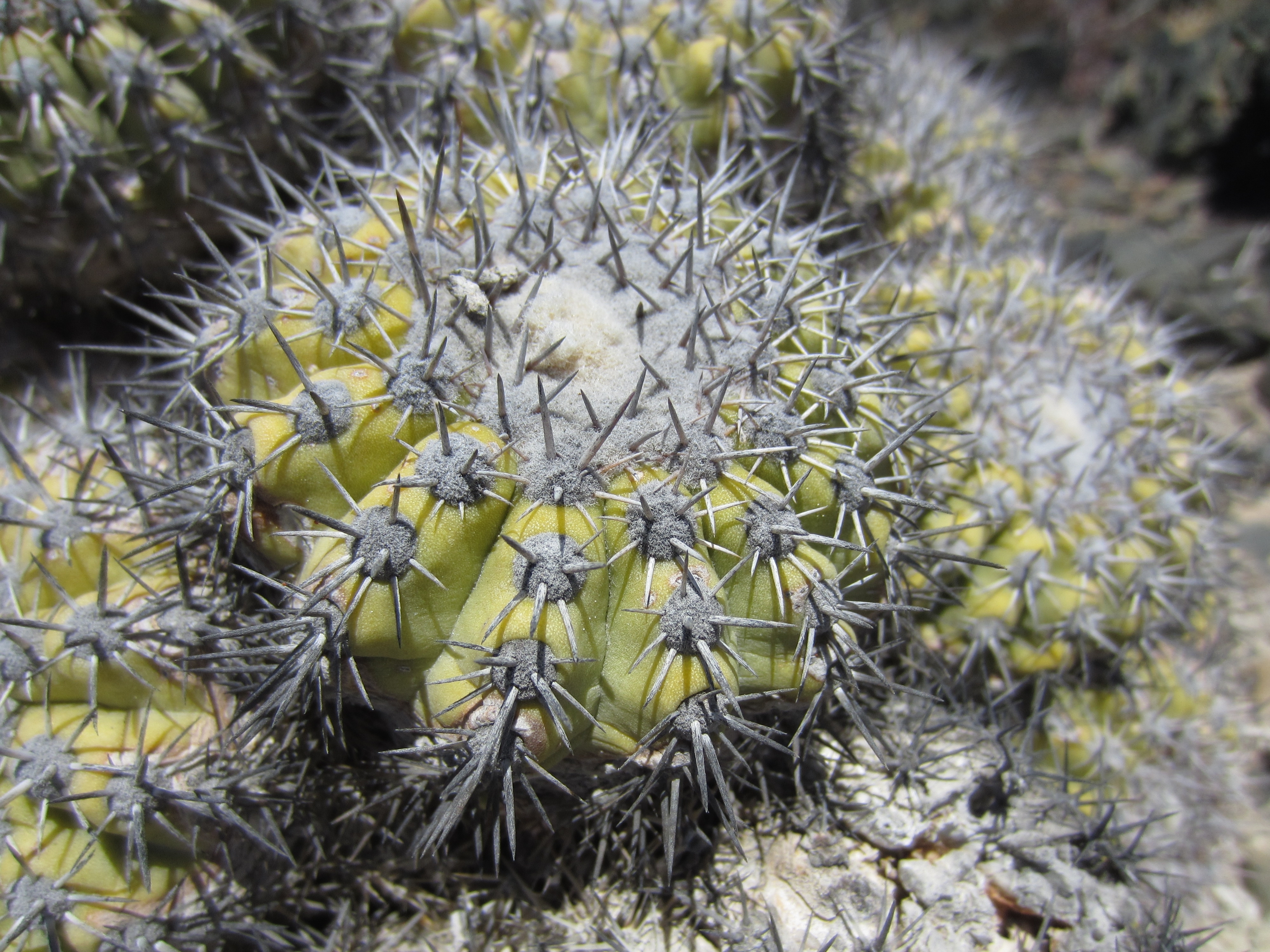Salm-Dyck
(Copiapoa cinerascens)

Description
Copiapoa cinerascens is a species of plant in the genus Copiapoa in the cactus family (Cactaceae). The specific epithet cinerascens comes from Latin and means 'ashing, fading'. Copiapoa cinerascens has large bulbous roots and usually forms groups. The depressed, globular shoots are dirty grey-green. They have a diameter of up to nine centimeters and have a sunken apex covered with gray wool. The approximately 20 ribs are narrow and dissolved in bumps and dented between the areoles. The areoles are crowded, roughly circular and gray or black. The thorns are stiff, straight and black. They turn ashen with age. There are two central spines 1.8 to 2.1 centimeters long and about eight radiating and interlocking radial spines 1 to 1.3 centimeters long. The yellow, wide open flowers are slightly fragrant. They are 2.7 to 5.5 centimeters long. The fruits are reddish to greenish in color and 1 to 1.5 centimeters long. Copiapoa cinerascens is distributed in Chile in the Región de Antofagasta from Barquito to Taltal. The first description was in 1845 as Echinocactus cinerascens by Joseph zu Salm-Reifferscheidt-Dyck. Nathaniel Lord Britton and Joseph Nelson Rose placed the species in 1922 in the genus Copiapoa they had set up
Taxonomic tree:







